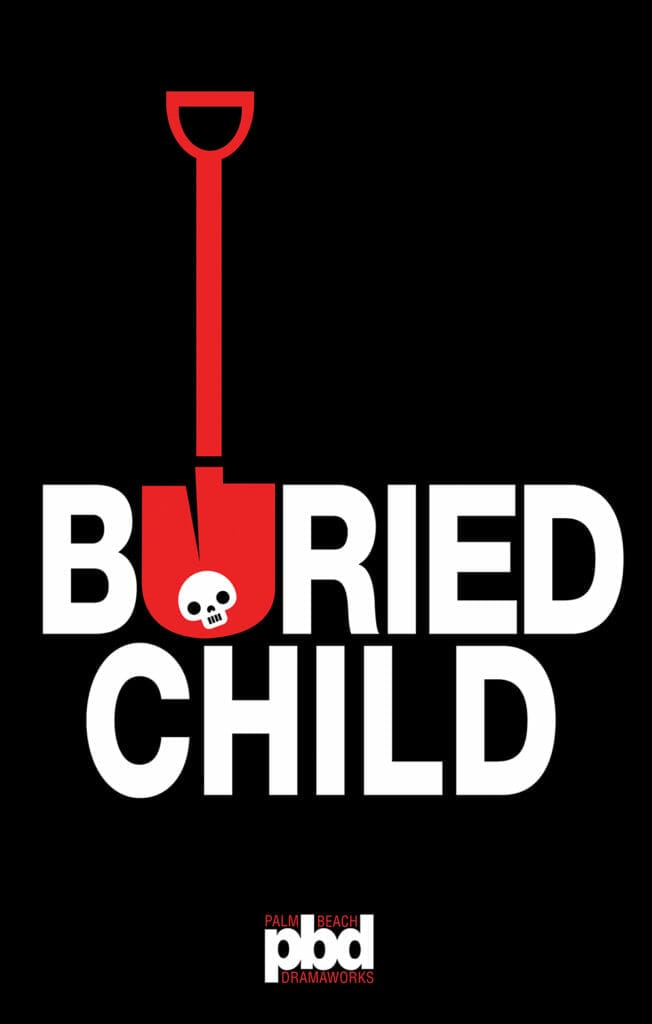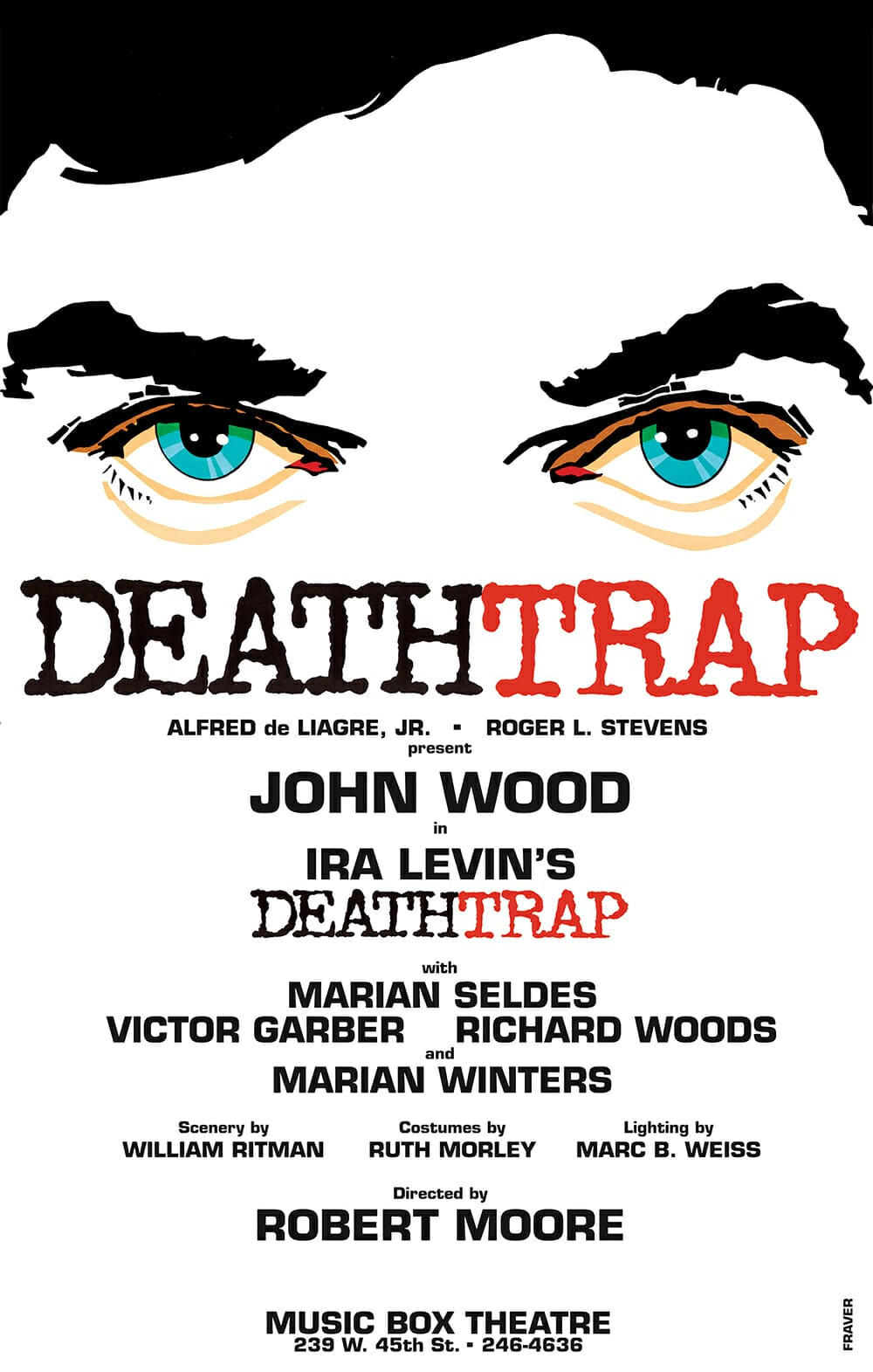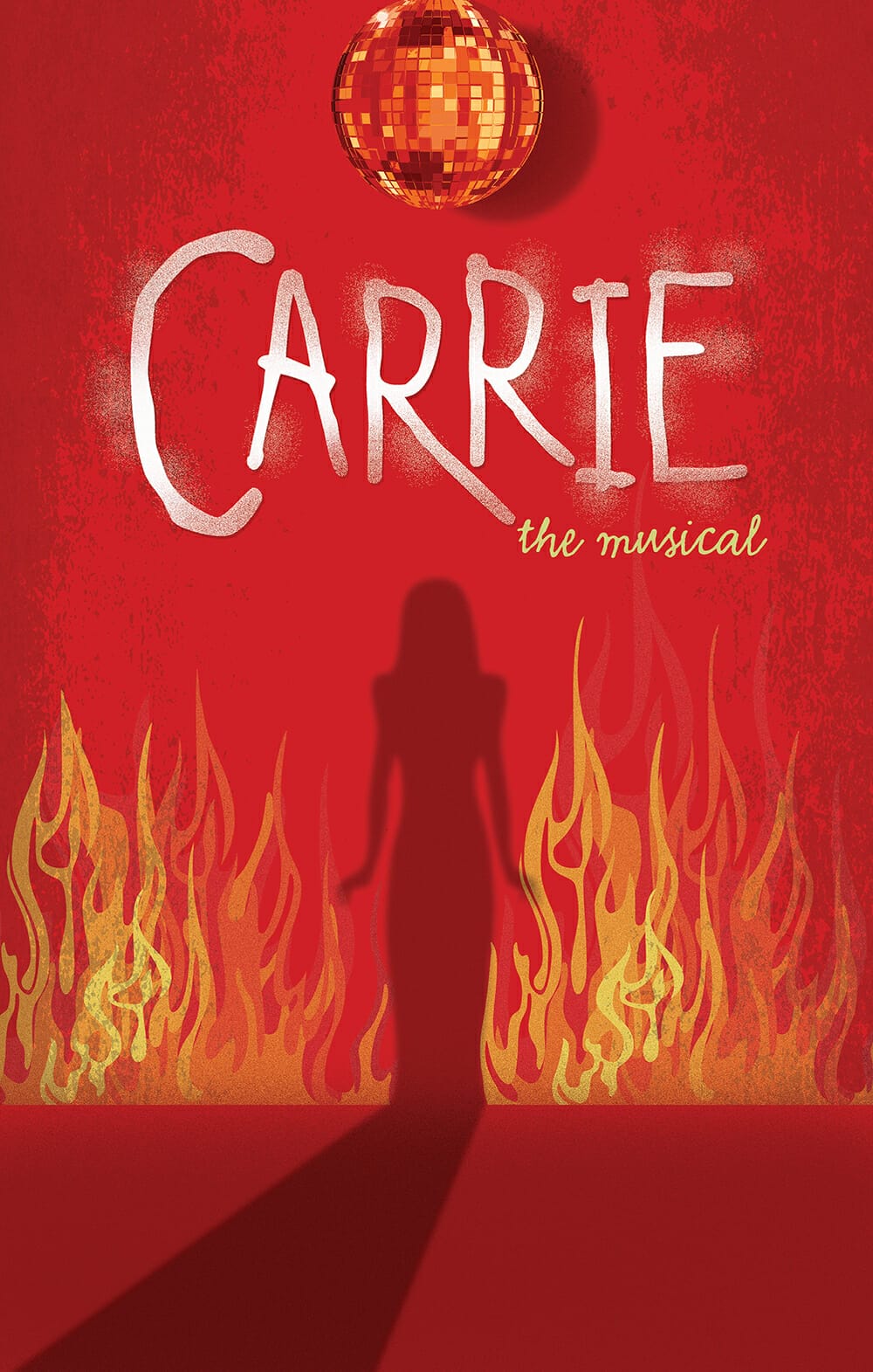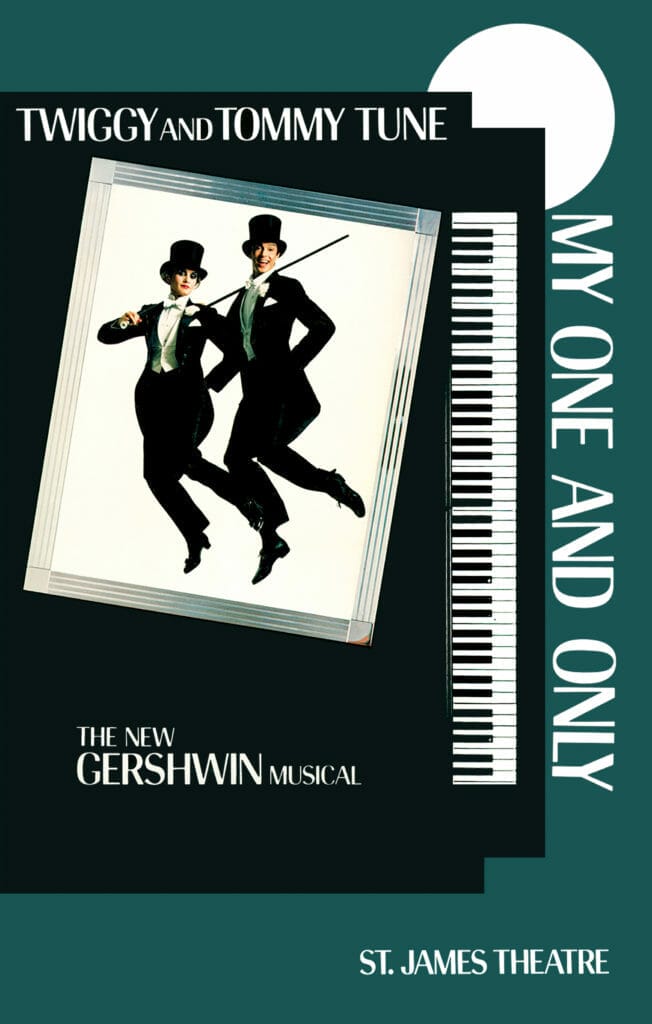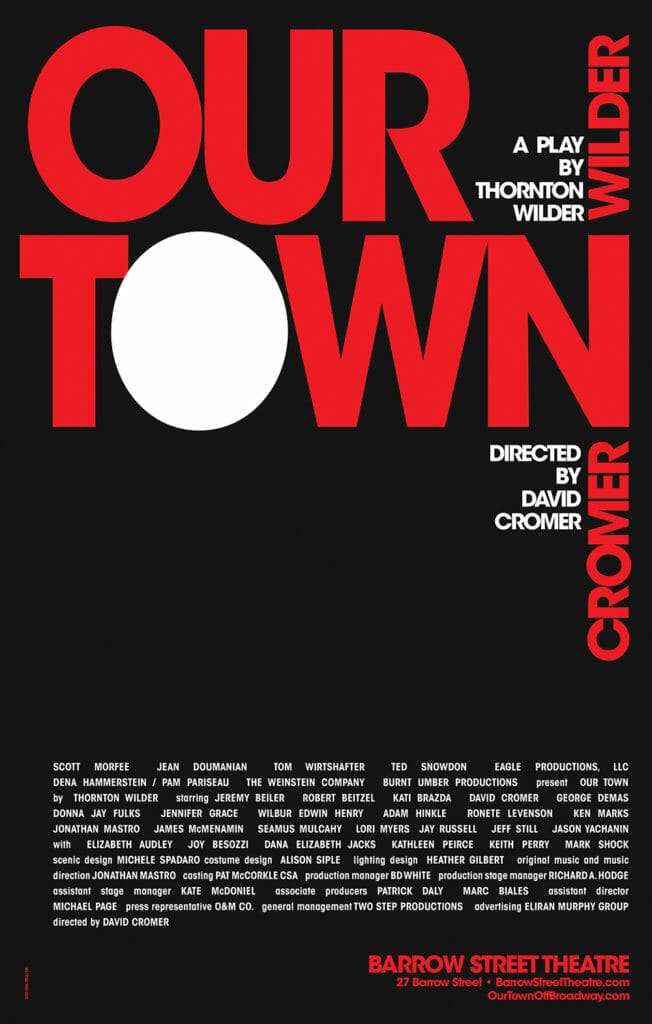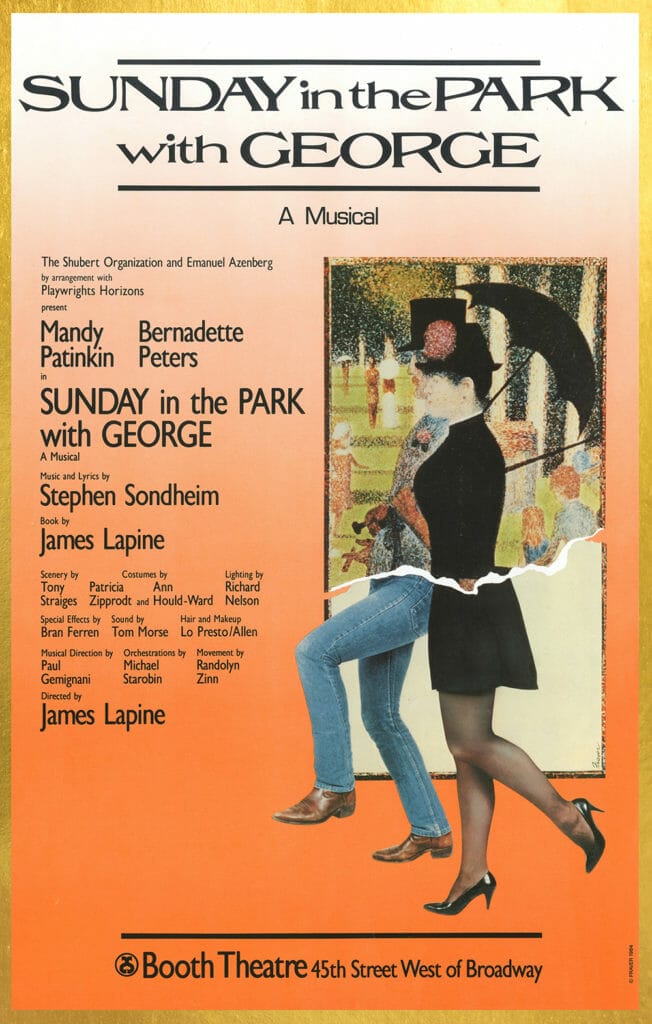Advertising art is certainly one of the unsung but essential elements of making theatre. Frequently, a show’s logo and graphic icon are as well-known as the title itself. Think of the simple woodcut-like icon of a lion’s head and the distinctive font spelling of THE LION KING in black type against a yellow-orange background the color of a lion’s coat.
This example and hundreds more are the work of a graphic designer many consider to be the best in the business of commercial theatre: Frank Verlizzo, or “Fraver,” as he is known in the industry. His book FRAVER BY DESIGN: 5 DECADES OF THEATRE POSTER ART FROM BROADWAY, OFF-BROADWAY AND BEYOND is his retrospective and memoir of a career creating visual identities for shows in New York and for regional companies around the US that began in 1974 when he was a 24-year-old college graduate. It features over 250 full-color reproductions of his designs alongside his recollections of the process through which they were created and ultimately approved (or not) by the show producers who were his clients.
The book is organized into six chapters: “Broadway,” “Sondheim” (including Fraver’s designs for the original Broadway productions as well as major revivals), “Rodgers and Hammerstein” (the new show logos he was commissioned by the Rodgers and Hammerstein Organization to design), “Off-Broadway,” “Beyond” (regional theatres) and “Unpublished” (works he created that were never approved or produced). Interspersed with Fraver’s narratives are comments from some of his clients and Broadway performers from shows for which he designed art.
"A successful show poster has to perform as well as inform.”
Show posters or ads are often the first way theatergoers learn of a production, and the first way they begin to experience it. Producer Jean Doumanian writes in the book, “A great poster is also a piece of art. It should catch your eye and draw you in. It should invoke an emotional response and invite the viewer to want to learn more.” Gerard Alessandrini, creator of the FORBIDDEN BROADWAY series, says the designer “not only has to be a great artist but a superb showman. A successful show poster has to perform as well as inform.”
FRAVER BY DESIGN: The master reveals his secrets.
Though Fraver does not describe any particular formula for developing this work, those providing comments in the book all attest that he begins by developing a deep understanding of the play – knowing the play’s tone and the effect it is intended to have on audiences. Jack Viertel and Rob Berman, Artistic Director and Music Director respectively for New York City’s ENCORES! series of staged concert musical theatre revivals, elaborate:
“He reads the scripts of the shows, watches whatever footage is available from previous productions, thinks long and hard about thematic content, as well as setting, feeling and characters.”
For BURIED CHILD by Sam Shepard, a play which Fraver calls “very dark, very oppressive,” Fraver placed a white, all-caps show title against a jet-black background
The BURIED CHILD image is an example of one of Fraver’s common techniques – that of incorporating an image suggestive of the show’s content or tone into the title typography, and he does here by using the scoop section of a red shovel as the “U” in “BURIED.”
Fraver’s iconic work for DEATHTRAP exemplifies two of his other trademark techniques – the use of custom fonts for the show title and creation of an iconic image to capture the show’s feeling.
The Courier typewriter-like font reflects DEATHTRAP’s plot about two playwrights involved in a murder mystery that may be based on a real life murder. The image of eyes staring out suggest the suspicions each character has toward the other.
Fraver created another eerie look for CARRIE: THE MUSICAL. The show’s lyricist, Dean Pitchford, describes it thusly in this book: “Frank has put the protagonist front and center….in silhouette, a mysterious, faceless figure…note the tensed shoulders and the hands stretched into near-claws. The eeriness of this image is heightened by the long shadow she casts, lit from behind by flames that almost appear to be dancing. But this sinister tableau is balanced by the vibrant color scheme – the eye-popping yellows and oranges and reds, which are seen not only below the title treatment (the word CARRIE as if graffitied into a gym locker), but are also reflected, winking and whirling, in the giddy mirror ball high atop the frame. This single image promises not only drama, intrigue, and energy. But also fun.”
A lighter tone is suggested by Fraver’s design for MY ONE AND ONLY – the 1983 musical build around songs from the catalog of George and Ira Gershwin that starred Tommy Tune and Twiggy.
Music, dance, the presence of its two stars in formal wear, together with a full moon promise a night of classy entertainment.
And what could be more appropriate for the classic OUR TOWN, known for its minimalist staging, than Fraver’s all-type art for the off-Broadway production that originated in Chicago, directed by Chicago’s David Cromer? Note how the “O” in “Town” resembles a full moon?
Theatre producer and general manager Manny Azenberg, in one of the book’s many commentaries, praises Fraver’s ability to capture the experience of seeing a play. Azenberg writes, “We should go to the theatre for a revelation! To see, hear, or experience something new – or in a new way. I do a play if it moves me. First is the visceral reaction. A theatre poster should reflect that as well.”
The master of theatre poster art meets the master of modern musical theatre.
FRAVER BY DESIGN’S chapter dedicated to his designs for shows written by Stephen Sondheim include art from five Broadway productions plus the overall identity and individual show designs for the six-show “Sondheim Celebration” produced by the Kennedy Center in 2002. Easily the most famous of Fraver’s Sondheim show designs is his art for the original Broadway production of SWEENEY TODD - the macabre operatic musical of a barber who teams with the mistress of a meat pie shop in 19th Century London to slit the throats of his customers and bake their meat into her pies. Fraver illustrated the final pose of the musical’s first act, in which the baker, Mrs. Lovett, and the barber Sweeney Todd brandish their “weapons” – her rolling pin and his razor.
Fraver says his SWEENEY TODD illustration was “a cross between John Tenniel’s ALICE IN WONDERLAND drawings and Franne Lee’s costume sketches” for the production. The black and white line illustration is accented with splashes of red blood and accompanied by type seemingly written in blood.
For Sondheim’s SUNDAY IN THE PARK WITH GEORGE, Fraver faced the challenge of capturing the musical’s concept of telling two stories that happen 90 years apart. The first act imagines the French painter Georges Seurat painting his masterpiece A SUNDAY ON THE ISLAND OF LA GRANDE JATTE in 1884. In the second act Seurat’s great-grandson, struggles with creating art in 20th Century America. Fraver captured both stories by using a segment of the famous painting for the upper half of the illustration – showing only the upper bodies two of the painting’s subjects and completing their bodies by showing their legs dressed in contemporary clothes.
The other Broadway productions of Sondheim shows represented are THE FROGS, the 2011 revival of FOLLIES, and the non-musical comedy-mystery GETTING AWAY WITH MURDER that Sondheim wrote with George Furth. The mystery is set in a gothic apartment building on Manhattan’s Upper West Side, and the poster shows the sort of gargoyle that might adorn such a vintage building – but with the gargoyle holding a gun. When the show announced it would close after a run of just three weeks, Fraver revised the illustration to show the gargoyle pointing the gun at his own head. The illustration was used in newspaper ads the final week of the run.
Show logos and ads are a part of the theatre-going experience
Often the first thing we see or hear about a show, the show’s graphic identity (icon, type treatment and color palette), if it’s effective, will get the theatregoer salivating to see the production. We see the graphic identity in the ads, then maybe on the cover of the cast recording CD, or at the airport in NYC as we’re arriving for a Broadway excursion, on a billboard in Times Square on our way to the theater, and then finally on cover of our Playbill before the curtain rises.
Fraver says, “The poster design image is the first thing anyone sees about a show…..And, after the production has run its course, for better or for worse, the poster is the one thing that remains. It’s a tangible, two dimensional memory of a live event you’ll never forget.” That statement is proved by simply leafing through the book. With nearly 200 plays or musicals represented among the book’s 250+ images, the reader is likely to be reminded of many shows they have seen and loved in one production or another over the years – from the classics through commercial hits and even a homegrown Chicago play like HIT THE WALL or THE ADDING MACHINE.
Fraver’s contribution to Broadway (and beyond – his portfolio and this book include designs for regional theatres outside New York as well) is summarized in one of the book’s comments by Max Woodward, former VP of Theatre Programming, The Kennedy Center.
“His work sells the tickets, but those brilliant designs also create the memories we all cherish of the performances that made us laugh, drew tears, or changed the way we look at love, conflict and life.”
IMAGES:
Courtesy of Schiffer Publishing Ltd.
About the Author:
John Olson is an arts carnivore who is particularly a love of music, theatre and film. He studied piano, trombone and string bass into his college years, performing in bands and orchestras in high school and college, at the University of Wisconsin-Madison. While working as an advertising agency account manager, he began a second career as an arts journalist and is now principal of John Olson Communications, a marketing and public relations business serving arts and entertainment clients.


